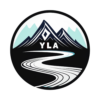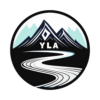
Explore the Revolutionary World of NFT Art: Where Blockchain Meets Creativity
Introduction: NFTs (Non-Fungible Tokens) have revolutionized the art world, offering a new way for artists to showcase, sell, and protect their digital creations. From digital paintings to music and virtual collectibles, NFT art has redefined the way we think about ownership and creativity. Whether you’re an artist, collector, or tech enthusiast, the world of NFT art is an exciting frontier that’s reshaping the future of art.
What is NFT Art?
NFT art refers to digital artwork that is tokenized on the blockchain, making each piece unique and verifiable. Unlike traditional art forms, where copies or prints can dilute the value of an artwork, NFTs are built on blockchain technology, which guarantees the ownership and authenticity of each piece. Each NFT represents a one-of-a-kind digital asset, whether it’s a GIF, video, painting, or even music, stored on a decentralized ledger for complete transparency.
How Does NFT Art Work?
NFTs are digital tokens that exist on a blockchain—most commonly on the Ethereum blockchain—that certify ownership and provenance of a digital asset. When an artist creates an NFT artwork, they mint a token that is linked to the digital file, embedding it with metadata that records its history of ownership and transactions. This means that collectors can buy, sell, and trade NFT artworks with a verifiable trail of ownership, making the digital art market more secure and transparent.
Iconic Examples of NFT Art
- Beeple’s “Everydays: The First 5000 Days”: One of the most famous examples of NFT art, this digital collage by artist Beeple sold for a staggering $69 million at Christie’s auction house. It represents the groundbreaking nature of NFTs in the art world and the growing value of digital art.
- CryptoPunks: These pixelated characters are among the earliest examples of NFTs. Created by Larva Labs, the CryptoPunks project consists of 10,000 unique, algorithmically generated characters, and they are considered highly valuable in the world of NFT collectibles.
- Bored Ape Yacht Club: Another highly coveted NFT collection, the Bored Ape Yacht Club features hand-drawn cartoon apes with unique traits. Each NFT also provides membership to an exclusive club, with further perks and events available to owners.
The Appeal of NFT Art for Artists and Collectors
NFTs offer artists new ways to monetize their digital works while ensuring that they retain control over ownership and royalties. Unlike traditional galleries, where artists often lose a large percentage of their earnings, NFT marketplaces allow creators to earn directly from sales, including a percentage of resale profits. Additionally, NFT art offers collectors a way to invest in the digital art world, with provable ownership and the ability to trade assets on global marketplaces.
Why NFT Art is Revolutionizing the Art World
NFT art has opened up new possibilities for artists and collectors. Digital artists, who previously struggled to monetize their work, now have a marketplace where their art can be bought and sold like physical paintings or sculptures. Blockchain technology ensures transparency and authenticity, eliminating the risk of forgeries and offering artists control over their intellectual property. For collectors, NFT art offers the chance to own a verifiable piece of digital history, with the potential for significant returns on investment as the market grows.
NFT Art and the Environment
While NFTs offer many benefits, the environmental impact of minting digital tokens on the blockchain has been a topic of debate. The process of verifying and recording transactions on certain blockchains, such as Ethereum, requires significant computational power, contributing to carbon emissions. However, artists and platforms are actively exploring more sustainable solutions, such as transitioning to eco-friendly blockchains like Tezos or adopting Ethereum’s upcoming transition to proof-of-stake, which will dramatically reduce energy consumption.
Popular NFT Marketplaces
- OpenSea: One of the largest NFT marketplaces, OpenSea allows artists and collectors to buy, sell, and trade NFTs in various categories, including art, music, gaming, and virtual worlds.
- Rarible: A community-owned NFT marketplace that allows artists to mint their own NFTs and collectors to buy unique digital works. Rarible also supports customizable royalties, so artists can earn revenue from resales.
- Foundation: A curated NFT platform that focuses on high-quality digital art, providing artists with an exclusive space to showcase their work and collectors with a curated selection of NFTs.
The Future of NFT Art
The rise of NFTs is just the beginning of a larger shift in how art is created, shared, and sold in the digital age. As technology advances, we can expect to see even more immersive and interactive forms of NFT art, such as virtual reality art exhibitions, augmented reality experiences, and metaverse galleries. Blockchain technology will continue to empower artists, providing new opportunities for collaboration, ownership, and creativity in the digital realm.
Conclusion: Dive Into the Future of Art with NFTs
NFTs are transforming the art world, offering artists, collectors, and enthusiasts an entirely new way to experience and engage with digital art. Whether you’re interested in buying your first NFT or exploring the latest trends in blockchain-based art, NFTs offer endless possibilities for creativity, ownership, and innovation.
![]()

© 2024 YourLocalArt
Terms of Use
Privacy Policy
Security
Conditions of Sale
ACA’s Sellers Agreement
Buyer Guarantee
Do not sell my personal information
© 2024 YourLocalArt Terms of Use Privacy Policy Security Conditions of Sale ACA’s Sellers Agreement Buyer Guarantee Do not sell my personal information

